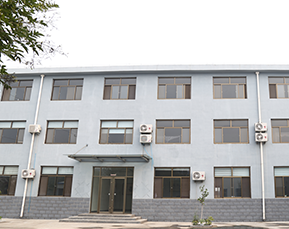 Afrikaans
Afrikaans  Albanian
Albanian  Amharic
Amharic  Arabic
Arabic  Armenian
Armenian  Azerbaijani
Azerbaijani  Basque
Basque  Belarusian
Belarusian  Bengali
Bengali  Bosnian
Bosnian  Bulgarian
Bulgarian  Catalan
Catalan  Cebuano
Cebuano  Corsican
Corsican  Croatian
Croatian  Czech
Czech  Danish
Danish  Dutch
Dutch  English
English  Esperanto
Esperanto  Estonian
Estonian  Finnish
Finnish  French
French  Frisian
Frisian  Galician
Galician  Georgian
Georgian  German
German  Greek
Greek  Gujarati
Gujarati  Haitian Creole
Haitian Creole  hausa
hausa  hawaiian
hawaiian  Hebrew
Hebrew  Hindi
Hindi  Miao
Miao  Hungarian
Hungarian  Icelandic
Icelandic  igbo
igbo  Indonesian
Indonesian  irish
irish  Italian
Italian  Japanese
Japanese  Javanese
Javanese  Kannada
Kannada  kazakh
kazakh  Khmer
Khmer  Rwandese
Rwandese  Korean
Korean  Kurdish
Kurdish  Kyrgyz
Kyrgyz  Lao
Lao  Latin
Latin  Latvian
Latvian  Lithuanian
Lithuanian  Luxembourgish
Luxembourgish  Macedonian
Macedonian  Malgashi
Malgashi  Malay
Malay  Malayalam
Malayalam  Maltese
Maltese  Maori
Maori  Marathi
Marathi  Mongolian
Mongolian  Myanmar
Myanmar  Nepali
Nepali  Norwegian
Norwegian  Norwegian
Norwegian  Occitan
Occitan  Pashto
Pashto  Persian
Persian  Polish
Polish  Portuguese
Portuguese  Punjabi
Punjabi  Romanian
Romanian  Russian
Russian  Samoan
Samoan  Scottish Gaelic
Scottish Gaelic  Serbian
Serbian  Sesotho
Sesotho  Shona
Shona  Sindhi
Sindhi  Sinhala
Sinhala  Slovak
Slovak  Slovenian
Slovenian  Somali
Somali  Spanish
Spanish  Sundanese
Sundanese  Swahili
Swahili  Swedish
Swedish  Tagalog
Tagalog  Tajik
Tajik  Tamil
Tamil  Tatar
Tatar  Telugu
Telugu  Thai
Thai  Turkish
Turkish  Turkmen
Turkmen  Ukrainian
Ukrainian  Urdu
Urdu  Uighur
Uighur  Uzbek
Uzbek  Vietnamese
Vietnamese  Welsh
Welsh  Bantu
Bantu  Yiddish
Yiddish  Yoruba
Yoruba  Zulu
Zulu Understanding the Impact of Lagging on Head Pulley Performance in Belt Systems
Understanding Lagged Head Pulleys A Comprehensive Overview
Lagged head pulleys are integral components in various mechanical systems, particularly in the context of conveyor systems and material handling equipment. These pulleys play a crucial role in the transmission of power, ensuring that belts move efficiently and effectively. In this article, we will explore the design, function, and applications of lagged head pulleys, along with their benefits in industrial settings.
What is a Lagged Head Pulley?
A lagged head pulley is a type of pulley that features a lagging surface, typically made from rubber or other friction-enhancing materials. This surface is bonded to the pulley’s shell, providing additional traction between the pulley and the belt that runs over it. The primary purpose of the lagging is to reduce slippage, increase grip, and thus improve the efficiency of the conveyor system. Lagged pulleys are often utilized in scenarios where heavy loads are transported or where wet, muddy, or slippery conditions can compromise the performance of standard pulleys.
Design and Construction
The design of a lagged head pulley is typically cylindrical, and the lagging can be applied to various sections, including the crown, which helps in centering the belt and preventing misalignment. The lagging material is chosen based on the specific application requirements, including load capacity, environmental conditions, and the type of materials being transported. Common lagging materials include abrasion-resistant rubber, ceramic-coated options, and even special composites designed for extreme conditions.
The construction of lagged head pulleys must be robust to withstand the forces exerted during operations
. Manufacturers often ensure that the core pulley is made from high-strength steel or another durable material, providing the necessary support for the lagging and overall longevity of the component.Applications of Lagged Head Pulleys
lagged head pulley

Lagged head pulleys are widely used across various industries. They are a fundamental part of conveyor systems in mining operations, where heavy ores and materials are transported from one point to another. In quarries, aggregate processing relies on lagged pulleys to handle bulk materials efficiently.
Additionally, these pulleys are found in manufacturing plants, where they assist in the movement of products along assembly lines. In food processing facilities, lagged head pulleys may be used in conveyor systems to maintain hygiene while providing the necessary grip to move packages or materials smoothly.
Benefits of Lagged Head Pulleys
The implementation of lagged head pulleys in industrial settings brings about multiple benefits. Firstly, they greatly enhance the friction between the pulley and the belt, reducing the risk of slippage, especially in applications involving inclined belts or wet conditions. This improved grip translates to lower energy consumption, as systems do not need to exert as much force to maintain belt movement.
Secondly, the longevity of both the belt and the pulley is increased. By minimizing slippage, wear and tear on the belt are reduced, leading to lower maintenance costs and extended service life. Additionally, the rugged design of lagged head pulleys allows them to endure harsh operating environments, ensuring reliable performance over time.
Conclusion
Lagged head pulleys are a vital component in many industrial applications, providing the necessary grip and efficiency for the transport of materials in challenging environments. Their design and construction are tailored to enhance performance and durability, making them an essential choice for industries that demand reliability and efficiency. As technology continues to advance, the development of new lagging materials and pulley designs promises to further optimize operations, paving the way for even greater advancements in material handling systems. Understanding and implementing lagged head pulleys can lead to significant improvements in productivity, safety, and cost-efficiency in various industrial applications.
-
Revolutionizing Conveyor Reliability with Advanced Rubber Lagging PulleysNewsJul.22,2025
-
Powering Precision and Durability with Expert Manufacturers of Conveyor ComponentsNewsJul.22,2025
-
Optimizing Conveyor Systems with Advanced Conveyor AccessoriesNewsJul.22,2025
-
Maximize Conveyor Efficiency with Quality Conveyor Idler PulleysNewsJul.22,2025
-
Future-Proof Your Conveyor System with High-Performance Polyurethane RollerNewsJul.22,2025
-
Driving Efficiency Forward with Quality Idlers and RollersNewsJul.22,2025





























